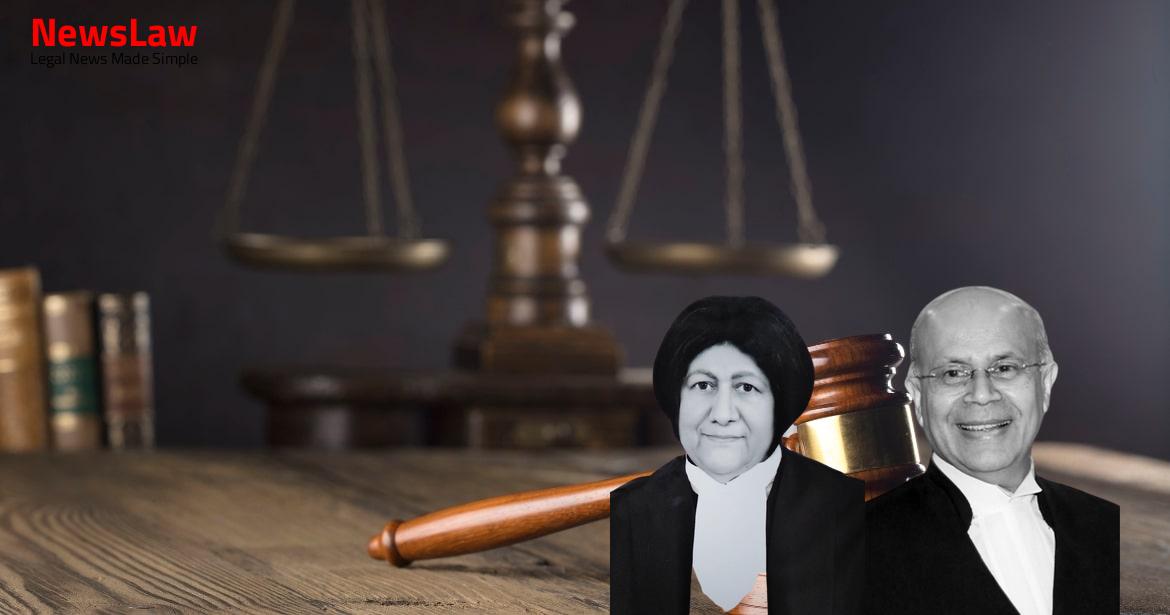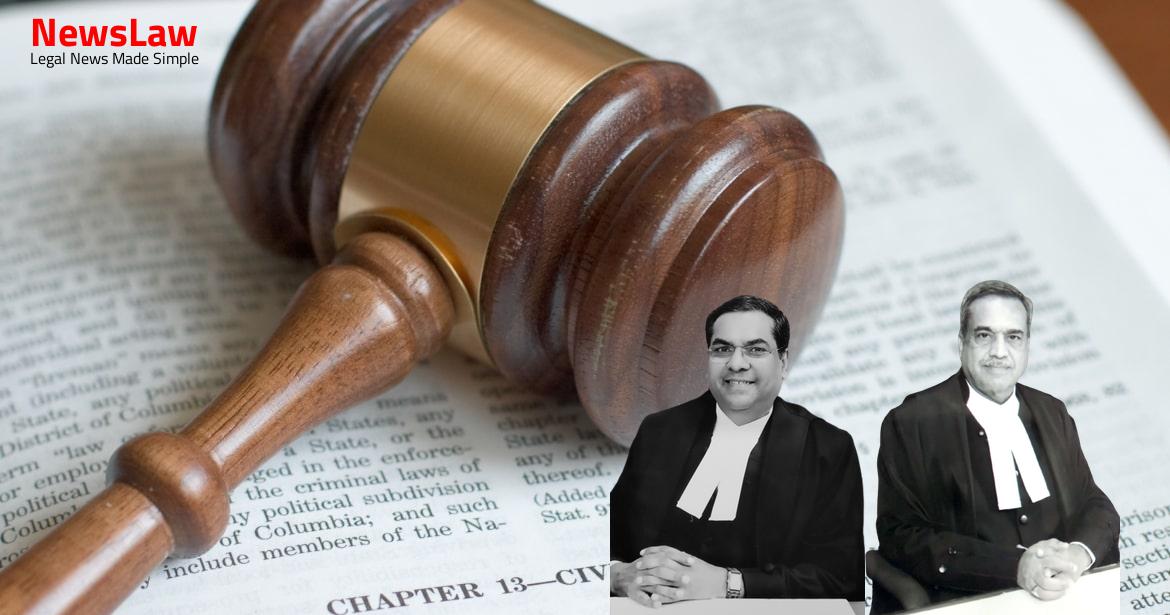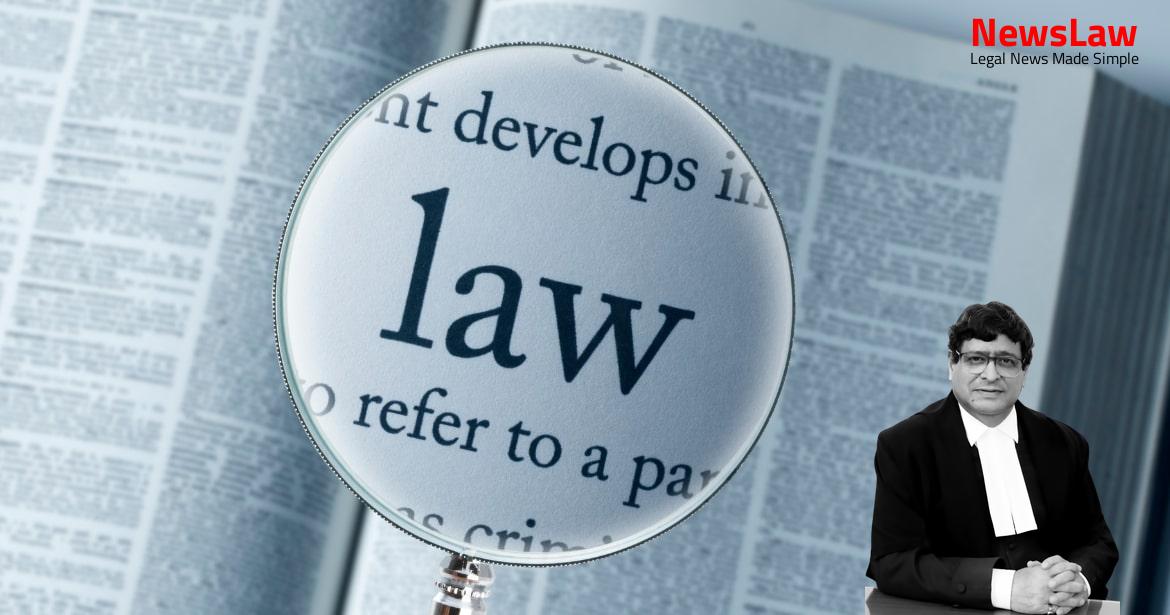Explore the realm of legal scrutiny as the Supreme Court of India dives deep into a case filled with complexities and uncertainties. Witness the unveiling of discrepancies that led to a crucial acquittal verdict, highlighting the intricacies of legal proceedings and the pursuit of truth and justice.
Facts
- Only six out of the thirteen accused were charged.
- The witnesses arrived after the occurrence.
- Two of the accused were tried by the juvenile court.
- PW-1 and PW-8 were not eye witnesses.
- Seven accused were summoned under Section 319.
- Appellant no.2 made the fatal assault on the deceased with a lathi while appellant no.1 also assaulted the deceased.
- One accused, Ishwar, has been acquitted by the High Court.
- The two appellants were convicted under Sections 302, 149, and 148 IPC.
- The parties resided in the same locality and there is evidence of a street light.
- RLC (Real Life Consequences) is a crucial factor in determining the extent of punishment for the convicted persons.
- RLC takes into consideration the impact of the crime on the victims, their families, and the society at large.
- The Trial Court considered the RLC of the crimes committed by the three convicted individuals before delivering the verdict.
- The RLC analysis helped the Court in determining the appropriate punishment that would fit the severity of the crimes committed.
- By considering the RLC, the Court ensured that justice was served not just in theory but also in the real-life implications of the crimes.
Also Read: Land Dispute Resolution: Supreme Court Ruling on Specific Performance
Arguments
- Appellant argues that once other accused are acquitted, the two appellants cannot be convicted with Section 149 of the IPC.
- Appellant contends that High Court erred in convicting with Section 34 without a charge under that section.
- No evidence of common intention or a prior meeting of minds to commit the assault.
- Citing Khem Karan and others vs. State of U.P., it is argued that PW-1’s credibility as an eye-witness should not be doubted due to relation to the deceased.
- An alternative argument is made for conviction under Section 304 Part-II IPC.
- Reliance is placed on Dalip Singh vs State of Punjab, AIR 1953 SC 364::1954 SCR 145, and Sakharam Nangare vs State of Maharashtra, 2012 (9) SCC 249.
Also Read: Landmark Judgment: Setting Precedent for Contractual Compliance
Analysis
- The evidence of the sole witness, PW-1, has been doubted by both the Trial Court and the High Court.
- The prosecution failed to explain the delay of six hours in going to the police station after the incident.
- The High Court considered the appellants as the only assailants of the deceased, despite inconsistencies in the evidence.
- The presence of witnesses like Kamla and Pali Ram, who were supposed to accompany the appellants, was not explained and they were not examined.
- The number and nature of injuries on the deceased suggest a mob assault rather than the involvement of only the two appellants.
- There were discrepancies in the testimony of PW-8, who was considered an eyewitness by the High Court, but whose presence was doubted by the Trial Court.
- The circumstances around the visit to the police station at an odd hour by PW-1 and her sister-in-law raise questions, especially in the context of pre-existing enmity between the parties.
- The injuries on the deceased were extensive and inflicted by multiple weapons, raising doubts on the involvement of only two accused.
- A single eyewitness account requires careful scrutiny and cannot be relied upon solely for conviction, especially when inconsistencies and improbabilities exist in the narrative.
- The possibility of false implication cannot be ruled out, especially considering the presence of multiple assailants armed with different weapons.
- The case relies entirely on the solitary evidence of PW-1
- The High Court identified several inconsistencies in PW-1’s testimony
- The reliability of an eyewitness testimony is crucial when it is the sole evidence
- The occurrence took place in darkness, further casting doubt on the accuracy of the witness account
- In the case of Lallu Manjhi and another vs State of Jharkhand, the observation was made that if multiple individuals inflicted blows, there should be a corresponding number of injuries on the deceased
- The version of the incident in court is different from the initial report, creating doubt.
- Sole testimony of Mannu (PW 9) cannot be relied upon for conviction of all accused.
- High Court’s order is deemed unsustainable and, therefore, set aside.
- 11 injuries were found on the deceased.
- Benefit of doubt granted for acquittal due to doubts regarding the eyewitness’s relationship with the deceased and hostility towards the accused.
Decision
- The appellants have been acquitted in this case.
- They are directed to be released immediately if they are not needed in any other case.
- The appeal has been allowed.
Case Title: JAGDISH Vs. THE STATE OF HARYANA
Case Number: Crl.A. No.-001864-001864 / 2009



